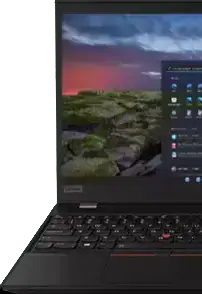What is multitasking?
Multitasking in computers refers to the capability of performing multiple tasks simultaneously, boosting efficiency. It allows users to seamlessly switch between different applications or processes, streamlining workflow. In essence, multitasking optimizes time and resources, enhancing the overall computing experience. Whether you're coding, browsing, or running various applications, this functionality ensures that your computer can handle multiple operations concurrently, making it a key feature for modern computing needs.
Why is multitasking important in computing?
Multitasking enhances efficiency by allowing you to work on different applications or processes simultaneously. This means you can check your email while running a virus scan or listen to music while editing a document. It saves time and makes computing more flexible.
How does multitasking work in operating systems?
In operating systems, multitasking is the seamless execution of multiple tasks simultaneously. This enhances efficiency by allowing users to switch between applications without waiting for one to finish before starting another. The operating system (OS) allocates resources to different tasks using scheduling algorithms, ensuring fair access to the central processing unit (CPU). Modern operating systems manage multitasking efficiently, utilizing features like process prioritization and time-sharing. This dynamic approach enables a fluid user experience, optimizing system performance. Understanding how multitasking works in operating systems is crucial for users and developers to make the most out of their computing experience.
Does multitasking affect system performance?
Yes, multitasking can impact performance. Running too many applications simultaneously might strain your system resources, leading to slower performance. It's essential to manage tasks efficiently to ensure a smooth computing experience.
How can I optimize multitasking on my computer?
To optimize multitasking on your computer, start by closing unnecessary applications to free up system resources. Prioritize essential tasks and consider upgrading your hardware, like adding more random-access memory (RAM) or opting for a faster processor. Additionally, use keyboard shortcuts or taskbars provided by your operating system for quick task-switching. Efficiently managing open applications and organizing them into virtual desktops can further enhance multitasking performance, ensuring a smoother and more responsive computing experience. Remember, finding the right balance between software and hardware capabilities is key to optimizing multitasking on your computer.
What role do processors play in multitasking?
Processors are the multitasking maestros of computers. Acting as the brain, processors handle multiple tasks concurrently, thanks to their multiple cores and fast clock speeds. The efficiency of a processor determines how smoothly your device can juggle various applications, ensuring seamless multitasking. A powerful processor enhances overall performance, enabling you to effortlessly switch between tasks and run resource-intensive applications without a hitch. The key to a responsive and efficient computing experience lies in the capabilities of your processor.
How does multitasking differ from multi-threading?
Multitasking and multi-threading are both methods of concurrent task execution in computers, but they differ in focus. Multitasking involves running multiple tasks simultaneously, allowing efficient switching between them. On the other hand, multi-threading is a technique where a single task is divided into smaller threads, each running independently. While multitasking manages distinct tasks concurrently, multi-threading focuses on parallel execution within a single task, optimizing performance in specific applications and scenarios. Understanding these differences is crucial for efficient task management in computer programming and system optimization.
Can multitasking lead to increased power consumption?
Yes, running multiple tasks simultaneously increases power consumption. The processor works harder, and additional resources are utilized, leading to higher energy usage. It's a trade-off between performance and power efficiency.
How does multitasking impact memory usage?
Multitasking increases memory usage as each running application requires allocated memory. If you have many applications open simultaneously, it can lead to high random-access memory (RAM) utilization, potentially slowing down your system.
Can smartphones effectively handle multitasking?
Yes, modern smartphones excel at multitasking. With advanced processors and optimized operating systems, they effortlessly manage multiple apps simultaneously. Whether you're streaming music, browsing the web, and checking emails concurrently, smartphones seamlessly juggle tasks. The robust hardware and efficient task management contribute to a smooth multitasking experience, ensuring you can stay productive and entertained on the go.
How can I switch between tasks on my computer effectively?
To switch between tasks on your computer effectively, utilize keyboard shortcuts or taskbars provided by your operating system. These shortcuts streamline the process, allowing you to seamlessly navigate between open applications. Additionally, consider using virtual desktops to organize and categorize tasks, further optimizing your workflow. Efficient task switching not only saves time but also enhances overall productivity, creating a smoother computing experience tailored to your needs.
What is the difference between foreground and background tasks in multitasking?
Foreground tasks are the actively used applications, where your attention is currently focused, while background tasks run concurrently without immediate user interaction. In computer multitasking, understanding this distinction is vital. Foreground tasks demand your attention, like a document you're actively editing, while background tasks, such as system updates, operate discreetly. This separation enhances efficiency, ensuring you can prioritize and manage various tasks simultaneously, optimizing your computing experience. Mastering foreground-background dynamics in multitasking empowers you to navigate your computer environment with greater control and productivity.
How does multitasking relate to parallel computing?
Multitasking and parallel computing share the common ground of simultaneous task execution, yet they differ in scope. Multitasking involves managing various tasks on a single processor, enhancing overall efficiency. In contrast, parallel computing utilizes multiple processors to simultaneously tackle portions of a complex task. Understanding this relationship is crucial for optimizing computing performance, as both concepts contribute to seamless task execution and improved computational speed in diverse computing environments.
Can multitasking impact internet browsing?
Yes, multitasking can impact internet browsing if you have multiple tabs or applications open simultaneously. It might lead to slower page loading times and increased data usage. Managing your open tabs and background processes can help maintain a smoother browsing experience.
Does multitasking affect gaming performance?
Multitasking can affect gaming performance, especially on systems with limited resources. Running resource-intensive games alongside other applications may lead to lag or reduced frame rates. For optimal gaming performance, it's recommended to close unnecessary background tasks.
How does multitasking impact network communications?
Multitasking in network communications involves handling multiple connections simultaneously. Whether it's downloading multiple files, streaming content, or processing data from different sources, effective multitasking ensures efficient utilization of network resources.
How can multitasking benefit data processing?
Multitasking significantly benefits data processing in computers by enabling simultaneous execution of tasks like data extraction, transformation, and loading (ETL). This enhances efficiency, expediting the processing of extensive datasets for tasks such as data analysis and reporting. The ability to concurrently handle multiple data processing operations ensures optimal resource utilization and accelerates overall data workflow. Integrating multitasking capabilities into data processing systems leads to quicker insights and more streamlined operations, contributing to improved productivity and performance in the digital landscape.






